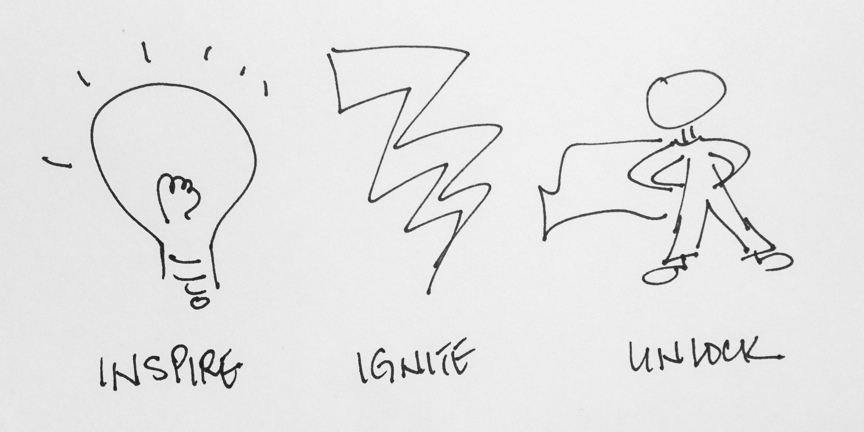Ready to Evoke with Imagery? Here are some ideas to make your communications more visual.
Before you start: Relax. Don't worry if you are creative enough. The objective is convey concepts, not become a world class cartoonist or photographer. There are lots of imagery options to cut and paste. I used hand drawn stick figures in my earliest presentations (see Mentorship OPL link below), and I still free hand at the white board.
-
Draw some pictures as you jot down notes. It's a way to practice turning thoughts into images. Bonus! Pictures are a great memory jogger.
-
Conduct training using imagery - one concept and image per slide. Get used to using less words. See Mentorship OPL for an example. Even if you use words on subsequent slides, engage with the visual concept first.
-
Replace words, graphs, and tables with Infographics - My cousin Matt introduced me to infographics - a method of data visualization. Visit CustomerMagnetism for a variety of examples.
-
Replace a slide of bullet points with an image and a spoken story. I recently gave a presentation on 10 tips to prevent fraud. I used 10 brand logos - one logo per slide, no other words. For each brand I told a story about either fraud or fraud prevention. No bullet points. No statistics. No tables.
-
Present with a mind map - mind maps are a way to organize thoughts and ideas into a visual representation. I used a mind map to describe a difficult legal strategy. I've used mind maps to organize thoughts before a speech. Visit Litemind for an overview.
Now let's pull it all together. Use images to show current state, your assessment, and the future state as a way to kick off business planning.
I once led a team where we were really working hard, but barely making progress. Instead of listing barriers, I drew a picture of our brand logo running on a treadmill, "That's us, going nowhere fast, and we're tired. What will it take for us to get off the treadmill and go somewhere?"
I then drew a picture of a heart with an arrow striking the middle, "Strategy is striking the enemy in the heart of power: economic, political, or financial. Who is our enemy and what's its source of power? We need a few strategic arrows, no more death by a thousand paper cuts."
I ended by drawing a picture of a street with a bunch of stop signs next to a super highway going into the horizon. "I want ONE change - FIX problems and eliminate stops. No more band aids. When the equipment goes down, fix the problem. Go down once, then run long. I don't want the equipment going up and down. It's the difference between highway driving and city driving."
That's it. 3 pictures. Everyone knew the difference between highway and city driving and we got focused. With that focus we changed how we staffed, how we communicated, and how we executed equipment maintenance. Everyone knew the direction, and we stepped off the treadmill.
Don't be discouraged if using imagery feels awkward at first. Remember, you're not replacing words, you're conveying concepts. Identify the concept first, then identify the image, then find the words to describe it. You'll find you need fewer words.

